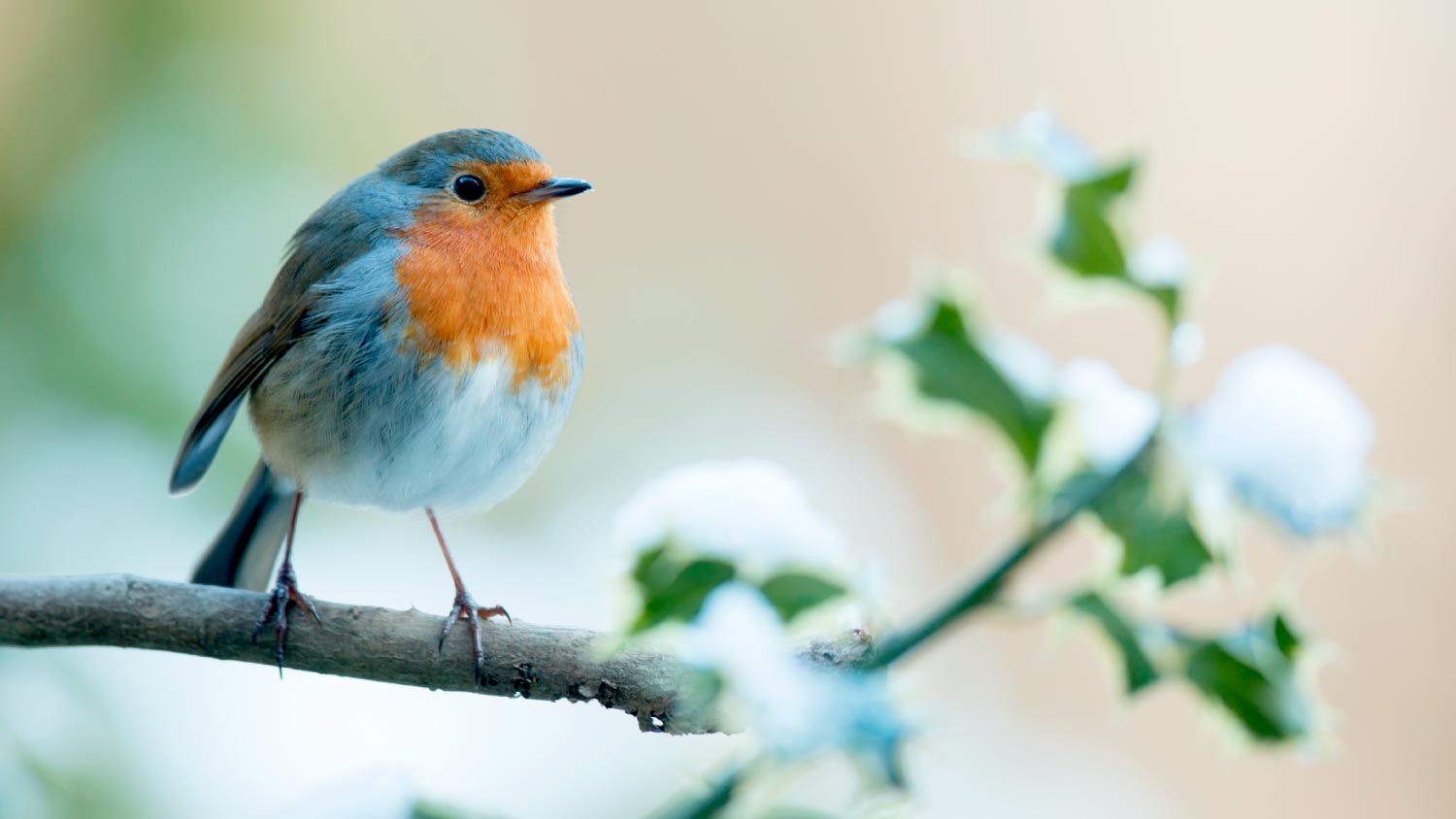
Whether you have bugs, bats, or rodents invading your home, you’ll want to contact an exterminator quickly. Find out how much pest control costs in Columbus, OH.
These critters won’t crawl into your ear, but they’ll still cause a headache


Did you notice an earwig in your home? Try not to wig out. These pests—also known as pincher bugs—are not trying to lay eggs in your ears like the childhood lore suggests. Instead, these household pests are after your houseplants or garden. Follow this guide to learn how to get rid of earwigs for good.

Contrary to their name, earwigs don’t have anything to do with your ear. The term refers to around 2,000 species of insects in the order Dermaptera. These mostly nocturnal critters are known for their two antennae, six legs, and pincers (called cerci) that extend from the bottom of their abdomen. They’re usually brown or black in color.
When you find an infestation, you might wonder if earwigs are dangerous. That depends on if you’re a houseplant or a human. Earwigs don’t bite and aren’t poisonous, though they technically can pinch you with their pincers when threatened, but most of the time, it won’t break your skin.
But these pesky insects can wreak havoc on your houseplants and garden. These omnivores will nibble holes in your favorite flowers and foliage and leave behind a stinky secretion.
The cost of pest control service is typically between $200 to $600, but it will cost more to get rid of earwigs if a single visit doesn’t remove all of them. You can expect to pay $100 to $300 quarterly or $40 to $70 monthly for regular pest control visits. Since earwigs are most active in late spring and early summer, schedule an exterminator visit in May before numbers multiply.

Earwigs are often confused with silverfish, a similar pest with large antennae. How do you know when you’re dealing with earwigs? In addition to the antennae and pincers, these insects have elongated, three-part bodies typically ¼ to one inch long. But you don’t have to see an earwig to know there’s an infestation in your home.
Signs of earwigs include:
Holes in flowers or foliage
Dead or dying vegetation
A foul smell from their yellow-brown secretions
A cluster of Earwig eggs, which are round and white to tan in color
To find earwigs, hunt these nocturnal insects at night. Use a flashlight to search the cool and moist locations in and around your home. Outside, earwigs love to hang out in leaf piles, mulch, and flower pots or around patio lights, faucets, and garden debris. Inside, you can find them around baseboards, under-sink cabinets, beneath wet carpeting or stacks of newspapers, and inside house plants or moist cracks and crevices.
There are a lot of reasons why we get bugs in our homes. Earwigs will typically enter from the outside through cracks or gaps in your home or by hitching a ride on newspapers, boxes, or lumber. Luckily, you can get rid of them using one or a combination of these eight methods.
Sticky earwig traps are available online and at home improvement stores for about $10. It’s best to lay them in areas where you’ve seen earwigs or near obvious feeding or shelter locations. Since earwigs are attracted to bright lights, you can place a light near the trap to draw them in.
Earwigs are also attracted to soy sauce, so you can make a trap at home using the popular kitchen condiment as bait. Poke holes in the top of a plastic cup with a lid, and fill it with an inch of equal parts canola oil and soy sauce. Leave your trap in areas where earwigs frequent, and add new soy sauce and canola oil every few days.

Diatomaceous earth (DE) is a finely ground sediment powder that dehydrates and eventually kills earwigs. You can find this natural solution at home improvement and garden stores. It typically costs between $30 and $40—make sure you grab the food-grade type.
Food-grade DE is safe to spread around pets, young children, and plants. Spread it around your garden, baseboards, and wherever else you suspect earwigs are entering your home or hanging out. This product loses its effectiveness when wet, so use a different solution in damp areas.
Boric acid is a natural insecticide that will kill pesky earwigs on contact. You can pick it up in powder form at your local hardware store and sprinkle it wherever earwigs enter your home. Keep in mind that boric acid is toxic if ingested, so apply it carefully using the manufacturer’s instructions and consider using another removal method if you have pets or young children in your home.

Alcohol is a potent earwig killer. To make an alcohol-based pesticide, combine equal parts 70% Isopropyl alcohol and water in a spray bottle. You can spray this mixture anywhere earwigs frequent, including plants.
Make sure you test the mixture on a leaf about 24 hours before spraying the whole plant. High levels of alcohol can damage foliage, and some plants are more resilient than others. If needed, you can dilute your solution with more water.
Dish soap is gentle on plants and harmful to earwigs. Thus, it’s the perfect DIY pesticide. In a spray bottle, combine dish soap and water, and then spray it in areas where you’ve seen earwigs. You can also spray houseplants, moist areas of your home, and near your garden. Like alcohol, too much dish soap can burn foliage. Test this solution on a single leaf before spraying the whole plant.

Birds and toads love to feast on earwigs. If you have an outdoor earwig issue, consider attracting these natural predators to your yard. For birds, you can install birdhouses and bird baths. To attract toads, you can install a pond or water feature. Frog houses will also give toads a safe place to hide—they love small, moist crevices like under rocks or tree roots.
It may seem like an obvious solution, but if you notice many earwigs or earwig eggs in one area of your home, use your vacuum to remove them. It’s also important to vacuum up any dead insects you find. These critters won’t hesitate to eat insects, dead or alive.

If your earwig problem is out of control, spraying pesticides to remove them may be the best option. Both Ortho and Wondercide make common pesticides that work for earwigs, starting at around $30 per bottle.
These solutions may be harmful to pets and children, so always use pesticides as a last-ditch effort. In this case, it’s usually better to hire a local pest control company that will ensure pesticides are used correctly and safely.
Once you get rid of earwigs, you need to make sure they never come back. The best way is to find out where the earwigs are coming from, block their path, and make their hiding places a wholly inhospitable environment.
An earwig can’t pass up the chance to infiltrate your home, a space that’s likely warm and possibly a good food source (especially if you have plants). Sealing off easy access can prevent them from entering your home.
Common entry points for earwigs include:
Holes in window screens
Space underneath your door
Crawlspaces
Through cracks in windows and doors
In-home earwig infestations are often prompted by outdoor clusters of these long, slender bugs. Yards and gardens are just as likely to become earwig hotbeds as your house, and, eventually, these earwigs can find their way inside. To prevent an infestation, clean up areas where earwigs like to live.
Clean up these common earwig hideouts:
Rake up sticks, leaves, and other yard debris
Remove leaf piles and other dead plant matter
Move wood piles, mulch piles, and soil piles away from your home
Get rid of standing puddles
Use a dehumidifier in areas of your home that are persistently damp or poorly ventilated like your attic or basement. This step will ward off earwigs, but if you notice a lot of bugs and think they might be coming from the ground, you may want to consider encapsulating your crawl space. At the very least, keep your crawl space as dry as possible.
If you see a few earwigs, it’s easy to roll up your sleeves and take measures into your own hands. Traps are readily available at hardware stores, and you can always spray your houseplants with a DIY solution. Unfortunately, sometimes an infestation has gone too far and it’s difficult to resolve it on your own.
If you need to use pesticides or you don’t know how earwigs are getting into your house, it’s best to hire a pest control company near you. They can safely kill the earwigs and find out where they’re coming from, solving the problem at the source.
While Naaman and Mike were very professional and amicable to work with, there were issues in this project that makes giving a higher rating impossible. We had several communications issues that delayed completion. The roofers accessed the property without communicating with me. Just showed up...
They called 15 minutes before arrival to announce that they were coming and arrived on time. Immediately they saw the broken springs and replaced them very quickly. Jeff suggest that I put on a rope to the manual switch to operate it more easily if necessary. I explained that my old door...
We had the solar paneling installed over the summer and the folks from Ecohouse they had a very competitive bid. They were able to make recommendations on the siding, whether it would be a good idea to get solar. They did an excellent job with the installation. They also helped us arrange...
The owner Dwight is one of the nicest people you will ever meet and he truly cares about his customers. We have been using Champion Pest Control for about 4 years now, he comes out ever 3 months on schedule to spray the house. We called him originally on a Saturday because we had carpenter...
They were very good. They got rid of all of the pests and continually put down bait boxes and also sprayed for various bugs as well.
The exterminating company sends a knowledgeable person over to the building if the tenants have seen some bugs or pests and they take care of it. They are very good. They are very responsive. They do quality work and their price isn't bad. They come at the time they say they will. The...
From average costs to expert advice, get all the answers you need to get your job done.

Whether you have bugs, bats, or rodents invading your home, you’ll want to contact an exterminator quickly. Find out how much pest control costs in Columbus, OH.

It’s important to know bed bug treatment costs if you have an infestation. Our guide covers different treatment methods and cost factors to eliminate these pests.

How much does bee removal cost? Learn what you’ll pay based on factors like hive location, size of the infestation, extermination or removal, and more.

While some rodent-borne illnesses are a thing of the past, rats can still cause serious illness. Read up on four rat-related diseases and how to avoid them.

In most cases, it’s best to call an exterminator at the first sign of fleas. Learn more about when to call an exterminator for fleas.

From the hooded skunk to the Eastern spotted skunk, learn how to identify common types of skunks you may see in your backyard or digging through your trash.